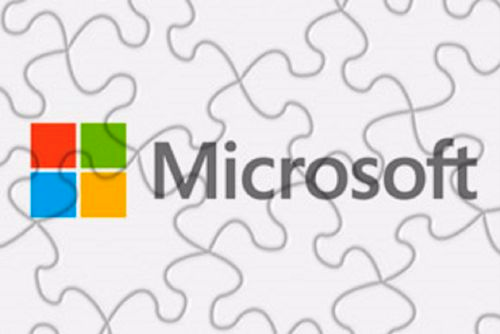An Overview of ERP Accounting Software for Business Owners

Organizations need powerful, flexible tools to manage their financial operations and drive growth. Enter accounting and enterprise resource planning (ERP) software: a comprehensive solution that combines the best features of traditional accounting software with an extensive range of additional business software capabilities. According to Yahoo Finance, the ERP accounting market is worth about $54 billion and continues to expand rapidly every year.
In this article, we’ll explore the world of ERP accounting software, delving into its unique advantages, delivering the differences between ERP and traditional accounting software and providing guidance on selecting, implementing and using an ERP system to optimize your organization’s financial management.
Let’s dive into the fascinating world of ERP accounting software and discover how it can revolutionize your business operations.
What Is Enterprise Resource Planning?
Enterprise Resource Planning is an integrated software solution that streamlines business processes, offering a comprehensive platform to manage most of your organization’s operational aspects. ERP accounting functionality is the core component of these systems, providing businesses with the financial reporting and auditing tools they need to manage their financial and business operations efficiently. Hubspot reported that 49% of organizations saw an improvement in their processes after an ERP implementation – only 4% saw no improvement.
ERP accounting software functionality is designed to help both small businesses and larger organizations alike achieve better financial management. By consolidating numerous business processes into a single, unified system, it enables companies to automate tasks, reduce errors and make data-driven decisions. Some of the key features of ERP accounting and operational suites commonly include sales and marketing management, production and inventory control, job costing, field service, procurement and financial reporting. These procedures adhere to accepted accounting principles and follow a debit and credit structure familiar to certified public accountants (CPAs).
ERP vs. Accounting Software
The primary difference between ERP and traditional accounting software lies in the scope and functionality they provide. While accounting software focuses solely on financial management and record-keeping, ERP systems offer a comprehensive solution that encompasses financial as well as most other aspects of most businesses.
A common question among small business owners is whether QuickBooks, a popular accounting software package, qualifies as an ERP system. The answer is no. While QuickBooks is a powerful tool for managing bookkeeping functions, it acts like a checkbook, catering only to one aspect of what an ERP system offers. In contrast, ERP software is a sweeping solution that integrates multiple business departments in addition to the accounting department. ERP accounting software like Microsoft Dynamics 365 Business Central offers a more robust financial and business management solution that aligns with CPAs’ expectations, practices and audit requirements.
Traditional accounting software is designed to handle transactions and generate financial statements. These solutions excel at managing accounts payable, accounts receivable, banking and other bookkeeping-related tasks. They’re ideal for small businesses that require a straightforward and user-friendly accounting tool. However, as a business grows, its needs may extend beyond the capabilities of standalone accounting software.
ERP software, on the other hand, is a more robust and versatile answer that integrates multiple business functions, including accounting, inventory management, sales, manufacturing, job costing and more. By consolidating data and automating processes, ERP systems enable businesses to streamline their operations, improve decision-making and increase efficiency. Examples of ERP systems besides the popular Microsoft Dynamics solutions include SAP Business One, Sage Intacct and Oracle NetSuite.
The choice between traditional accounting software and an ERP accounting system depends on the needs and size of your business. As your organization grows, it may require a more comprehensive solution to manage increasing complexity and facilitate decision-making.
Features ERP Businesses Benefit From
In this section, we will explore some key features of ERP systems that businesses can leverage to optimize their operations, enhance decision-making and drive growth. These features highlight the versatility and power of ERP solutions compared to traditional accounting software.
– Real-Time Data Access and Analytics: Consolidating data from various business functions provides real-time access to up-to-date information. This enables businesses to make informed decisions, monitor performance and identify trends that improve overall efficiency.
– Financial Forecasting and Budgeting: Advanced financial forecasting and budgeting tools allow businesses to anticipate future cash flow, expenses and revenue. By accurately predicting financial trends, organizations can proactively make decisions and optimize resource allocation.
– Automated Accounts Receivable Management: Streamlining the accounts receivable process by automating invoicing, payment tracking and collection to reduce manual errors, improve cash flow and help businesses maintain healthy customer relationships.
– Inventory Management and Control: Efficiently control inventory by tracking stock levels, order fulfillment and product movement to prevent stockouts, minimize excess inventory and optimize warehouse operations.
– Streamlined Procurement: Integrate procurement modules that help businesses automate and manage their purchasing processes, from requisition to payment to ensure timely delivery of goods and services, reduce errors and control costs.
– Enhanced Sales and Marketing: Businesses can better understand their target audience and develop targeted marketing strategies through the consolidation of customer data. This may improve customer acquisition and retention, driving revenue growth.
– Scalability and Customization: Add or modify modules as business needs to evolve to keep systems relevant and effective as the organization grows and changes.
– Improved Collaboration and Communication: A centralized platform that integrates various business functions facilitates collaboration and communication between departments, promoting a more cohesive, efficient organization.
– Enhanced Security and Compliance: Robust security measures and built-in compliance tools help businesses protect sensitive data and meet regulatory requirements.
Using ERP Accounting Software
Implementing and using ERP accounting software can seem daunting at first, but with proper planning and guidance, the process becomes manageable. Here are the key steps to successfully select and utilize ERP accounting software in your business.
– Define Your Business Requirements: Before choosing an ERP system, assess your business’s unique needs and requirements. Identify the specific features and functionalities your organization requires to help you select an ERP solution that best aligns with your goals.
– Assemble a Project Team: Form a dedicated project team to manage the implementation process. This team should include representatives from different departments who understand the unique needs of their respective areas. If additional expertise is needed, consider hiring an external consultant to provide expertise and management of the selection process. However, if they are helping you select a new ERP solution, they shouldn’t be a reseller of ERP solutions themselves which can color their perspective and even be a conflict of interest.
– Research and Select an ERP Solution: Once you have identified your needs, research various ERP software options, comparing features, pricing and customer reviews. Consult with industry experts or seek recommendations from colleagues to ensure you choose a reliable and suitable option.
– Develop an Implementation Plan: Create a detailed plan with your selected implementation partner outlining the steps and timeline for the ERP implementation. This plan should include data migration, system configuration, employee training and post-implementation support. A clear roadmap will help smooth the transition to the new system.
– Data Migration and Clean-Up: Before transferring data to your new ERP system, help guarantee it’s accurate and up-to-date. Remove duplicate entries, correct errors and update outdated information. This would also be the time to restructure your chart of accounts to improve financial tracking and reporting. Migrating clean, accurate data will minimize issues during implementation and facilitate a smoother transition.
– Configure the System: Set up your chosen ERP solution to meet your business’s specific needs. Configure it according to your industry’s best practices, internal processes and regulatory requirements. This may include setting up user roles, permissions, workflows and other relevant settings. If needed, have your ERP partner create custom applications to plug into the ERP solution for any unique business requirements not included in the base package and available add-on solutions. Ideally, these are identified upfront as part of the new ERP solution selection project and are included in the budget of the project upfront.
– Test and Go Live: Before fully launching the ERP system, conduct thorough testing to identify and resolve any issues or inconsistencies. Once testing is complete and the system is functioning as expected, transition to the new software and make it your primary business management tool.
– Employee Training: Invest time and resources in training employees on the new ERP system using hands-on workshops, online tutorials or one-on-one sessions. Ensuring your staff is proficient in using the software is crucial for successful adoption and long-term benefits. This is a common area where companies try to save money, but it causes frustration with users, hurts user adoption and costs more in the long run.
– Monitor and Optimize: After implementation, continuously monitor your ERP system’s performance and gather feedback from employees. Identify areas for improvement and make necessary adjustments based on the RIO of the cost to implement these changes to optimize the system for your business’s demands.
By following these steps, you can successfully set up, implement and use an ERP accounting solution that streamlines your business processes, improves decision-making and fosters growth.
How the TM Group Can Help
Implementing an ERP accounting software can be a complex process, but having expert guidance can make all the difference. The TM Group is a leading provider of professional services that can help your business successfully adopt an ERP system tailored to your specific needs. In many cases, choosing the right partner is more important than choosing the right software.
Knowledgeable Consultation
The TM Group’s informed consultants can help you evaluate your business requirements, identify areas for improvement, and provide the consulting and development services needed for a successful Microsoft Dynamics 365 ERP implementation. Our expertise ensures that you implement your new ERP solution so it aligns best with your organization’s goals and processes.
Tailored Implementations
Understanding that every business is unique, The TM Group offers implementation services tailored to your specific needs. Our team of professionals will work closely with you to design, configure, develop and implement the ERP system according to your industry best practices, internal workflows and regulatory requirements.
Seamless Data Migration
The TM Group’s experienced team will assist you in migrating your existing data to the new ERP system, ensuring accuracy and consistency throughout the process. We’ll help you clean up and organize your data and processes before the migration, minimizing potential issues and disruptions.
Comprehensive Employee Training
To ensure successful adoption of the accounting ERP software, The TM Group provides comprehensive onsite or remote training for your team. In addition to our extensive blog and resources, our trainers will equip your employees with the necessary skills and knowledge to effectively use the system, maximizing the return on your investment.
Ongoing Support and Optimization
The TM Group’s commitment to your success extends beyond the initial implementation. We offer continuous support and expertise, addressing any challenges that may arise as your business evolves. We’ll work with you to regularly optimize your ERP accounting system, ensuring it remains relevant and efficient in the face of changing business needs.
Ready for a free consultation? Contact the TM Group Today.


